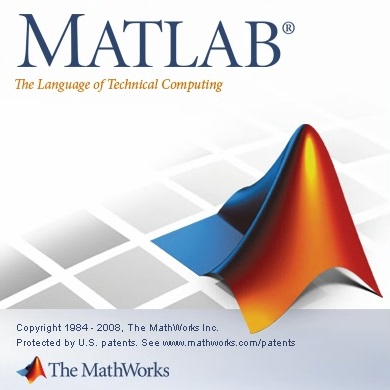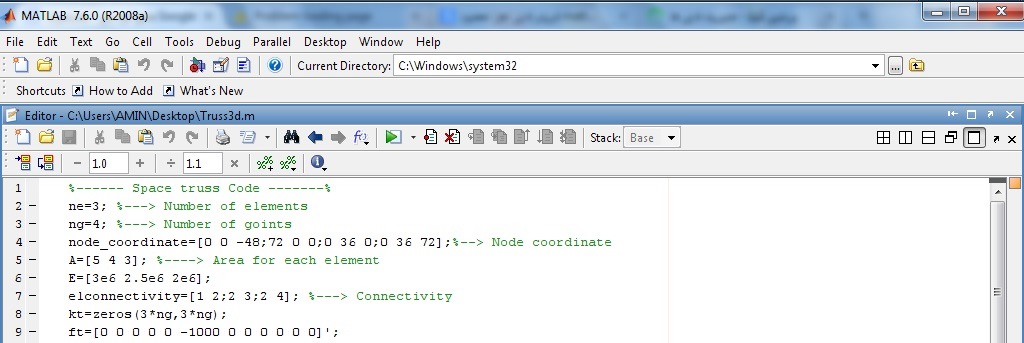اختصاصی از
فی موو کتاب ترکیب روش المان های محدود و المان گسسته (350 ص انگلیسی) دانلود با لینک مستقیم و پر سرعت .


Contents
Preface xi
Acknowledgements xiii
1 Introduction 1
1.1 General Formulation of Continuum Problems 1
1.2 General Formulation of Discontinuum Problems 2
1.3 A Typical Problem of Computational Mechanics
of Discontinua 4
1.4 Combined Continua-Discontinua Problems 27
1.5 Transition from Continua to Discontinua 28
1.6 The Combined Finite-Discrete Element Method 29
1.7 Algorithmic and Computational Challenge of the Combined Finite-Discrete
Element Method 32
2 Processing of Contact Interaction in the Combined Finite Discrete
Element Method 35
2.1 Introduction 35
2.2 The Penalty Function Method 40
2.3 Potential Contact Force in 2D 41
2.4 Discretisation of Contact Force in 2D 43
2.5 Implementation Details for Discretised Contact Force in 2D 43
2.6 Potential Contact Force in 3D 55
2.6.1 Evaluation of contact force 57
2.6.2 Computational aspects 58
2.6.3 Physical interpretation of the penalty parameter 62
2.6.4 Contact damping 63
2.7 Alternative Implementation of the Potential Contact Force 69
3 Contact Detection 73
3.1 Introduction 73
3.2 Direct Checking Contact Detection Algorithm 77
3.2.1 Circular bounding box 77
3.2.2 Square bounding object 78
3.2.3 Complex bounding box 79
3.3 Formulation of Contact Detection Problem for Bodies of Similar Size in 2D 80
3.4 Binary Tree Based Contact Detection Algorithm for Discrete Elements of
Similar Size 81
viii CONTENTS
3.5 Direct Mapping Algorithm for Discrete Elements of Similar Size 87
3.6 Screening Contact Detection Algorithm for Discrete Elements of Similar Size 89
3.7 Sorting Contact Detection Algorithm for Discrete Elements of a Similar Size 94
3.8 Munjiza-NBS Contact Detection Algorithm in 2D 102
3.8.1 Space decomposition 103
3.8.2 Mapping of discrete elements onto cells 104
3.8.3 Mapping of discrete elements onto rows and columns of cells 104
3.8.4 Representation of mapping 104
3.9 Selection of Contact Detection Algorithm 117
3.10 Generalisation of Contact Detection Algorithms to 3D Space 118
3.10.1 Direct checking contact detection algorithm 118
3.10.2 Binary tree search 118
3.10.3 Screening contact detection algorithm 118
3.10.4 Direct mapping contact detection algorithm 120
3.11 Generalisation of Munjiza-NBS Contact Detection Algorithm to
Multidimensional Space 120
3.12 Shape and Size Generalisation–Williams C-GRID Algorithm 128
4 Deformability of Discrete Elements 131
4.1 Deformation 131
4.2 Deformation Gradient 132
4.2.1 Frames of reference 132
4.2.2 Transformation matrices 139
4.3 Homogeneous Deformation 141
4.4 Strain 142
4.5 Stress 143
4.5.1 Cauchy stress tensor 143
4.5.2 First Piola-Kirchhoff stress tensor 145
4.5.3 Second Piola-Kirchhoff stress tensor 149
4.6 Constitutive Law 150
4.7 Constant Strain Triangle Finite Element 156
4.8 Constant Strain Tetrahedron Finite Element 166
4.9 Numerical Demonstration of Finite Rotation Elasticity in the Combined
Finite-Discrete Element Method 174
5 Temporal Discretisation 179
5.1 The Central Difference Time Integration Scheme 179
5.1.1 Stability of the central difference time integration scheme 182
5.2 Dynamics of Irregular Discrete Elements Subject to Finite Rotations in 3D 185
5.2.1 Frames of reference 185
5.2.2 Kinematics of the discrete element in general motion 186
5.2.3 Spatial orientation of the discrete element 186
5.2.4 Transformation matrices 187
5.2.5 The inertia of the discrete element 188
5.2.6 Governing equation of motion 188
5.2.7 Change in spatial orientation during a single time step 190
5.6.8 Change in angular momentum due to external loads 191
5.6.9 Change in angular velocity during a single time step 193
5.6.10 Munjiza direct time integration scheme 194
CONTENTS ix
5.3 Alternative Explicit Time Integration Schemes 203
5.3.1 The Central Difference time integration scheme (CD) 203
5.3.2 Gear’s predictor-corrector time integration schemes (PC-3, PC-4, and
PC-5) 204
5.3.3 CHIN integration scheme 205
5.3.4 OMF30 time integration scheme 206
5.3.5 OMF32 time integration scheme 206
5.3.6 Forest & Ruth time integration scheme 207
5.4 The Combined Finite-Discrete Element Simulation of the State of Rest 211
6 Sensitivity to Initial Conditions in Combined Finite-Discrete Element
Simulations 219
6.1 Introduction 219
6.2 Combined Finite-Discrete Element Systems 220
7 Transition from Continua to Discontinua 231
7.1 Introduction 231
7.2 Strain Softening Based Smeared Fracture Model 232
7.3 Discrete Crack Model 239
7.4 A Need for More Robust Fracture Solutions 254
8 Fluid Coupling in the Combined Finite-Discrete Element Method 255
8.1 Introduction 255
8.1.1 CFD with solid coupling 255
8.1.2 Combined finite-discrete element method with CFD coupling 257
8.2 Expansion of the Detonation Gas 259
8.2.1 Equation of state 259
8.2.2 Rigid chamber 259
8.2.3 Isentropic adiabatic expansion of detonation gas 262
8.2.4 Detonation gas expansion in a partially filled non-rigid chamber 264
8.3 Gas Flow Through Fracturing Solid 266
8.3.1 Constant area duct 267
8.4 Coupled Combined Finite-Discrete Element Simulation of Explosive Induced
Fracture and Fragmentation 270
8.4.1 Scaling of coupled combined finite-discrete element problems 274
8.5 Other Applications 276
9 Computational Aspects of Combined Finite-Discrete Element Simulations 277
9.1 Large Scale Combined Finite-Discrete Element Simulations 277
9.1.1 Minimising RAM requirements 278
9.1.2 Minimising CPU requirements 279
9.1.3 Minimising storage requirements 279
9.1.4 Minimising risk 279
9.1.5 Maximising transparency 280
9.2 Very Large Scale Combined Finite-Discrete Element Simulations 280
9.3 Grand Challenge Combined Finite-Discrete Element Simulations 281
9.4 Why the C Programming Language? 283
9.5 Alternative Hardware Architectures 283
9.5.1 Parallel computing 283
x CONTENTS
9.5.2 Distributed computing 285
9.5.3 Grid computing 288
10 Implementation of some of the Core Combined Finite-Discrete Element
Algorithms 291
10.1 Portability, Speed, Transparency and Reusability 291
10.1.1 Use of new data types 291
10.1.2 Use of MACROS 291
10.2 Dynamic Memory Allocation 292
10.3 Data Compression 294
10.4 Potential Contact Force in 3D 294
10.4.1 Interaction between two tetrahedrons 294
10.5 Sorting Contact Detection Algorithm 303
10.6 NBS Contact Detection Algorithm in 3D 304
10.7 Deformability with Finite Rotations in 3D 313
Bibliography 319
Index
دانلود با لینک مستقیم
کتاب ترکیب روش المان های محدود و المان گسسته (350 ص انگلیسی) 









